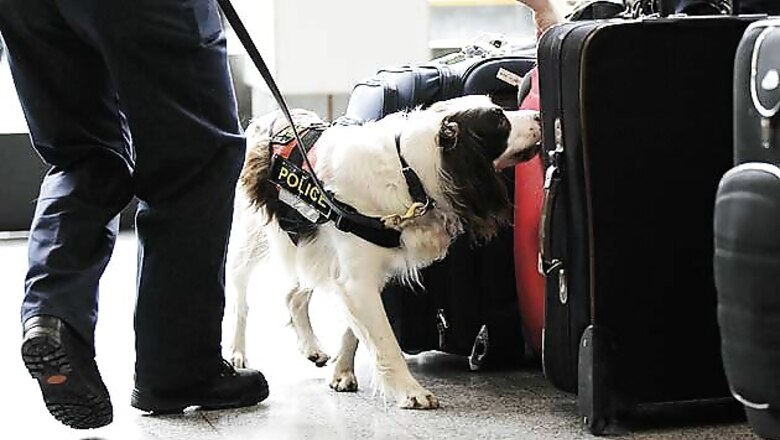
views
Scientists have unravelled the science behind how dogs detect actual explosives and differentiate them from other closely resembling compounds.
The study found the canines react best to the actual explosive and do not respond to odours 'similar' to explosives and would detect only the real explosive.
"Appropriately, dogs that are trained to find real explosives are going to find real explosives and not much else," said John Goodpaster, from Indiana University-Purdue University Indianapolis (IUPUI).
The study sought to determine which chemical compounds cause a dog to recognise a particular explosive and alert to it.
Previous studies suggested that certain non-explosive chemicals emitted by Composition C-4 cause dogs to alert, and that these specific chemicals could be used as mimic substances to train the dogs in place of real explosives.
Researchers discovered that the non-explosive chemicals given off by C-4 mimics also are present in a variety of everyday plastic objects such as PVC pipes, electrical tape, movie tickets, plastic grocery bag and plastic food wrapping.
The study exposed 33 trained canines to these vapours to see if the dogs would respond.
The field trials demonstrated that the dogs failed to respond in any significant way to specific odour compounds found in C-4.
The results indicate that if the dogs are trained on the full scent, they will only detect real explosives.
"The canines are not easily fooled - you can't pick and choose components of explosive odours and expect the dog to respond. Dogs are specific and it's the full scent that causes them to alert," Goodpaster said.
While there is technology available to search for explosives, canines remain the best option because of their speed, sensitivity and ability to search large numbers of items, Goodpaster said.
The study appears in the journal Forensic Science International.














Comments
0 comment